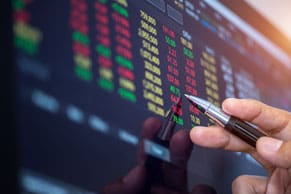In accounting, a capital item is any asset, from real estate to office furniture to company vehicles, that’s carried on the balance sheet and depreciated over a set period of time.
But that’s only part of the story. Say you’re a commercial baker and need to get your products to restaurant customers. Do you spend $50,000 on a delivery van, lease that same vehicle for $350 per month, or hire a contract delivery service for a variable weekly fee based on mileage?
The objective is to serve customers effectively, use available cash wisely, and advance short- and long-term business goals. Companies that manage to do all three effectively tend to do a good job tracking how much they’re investing in capital versus operating costs while determining which CapEx investments generated a profit—and which emerged as financial losses.
What Are Capital Expenditures (CapEx)?
Capital expenditures are funds used to purchase, maintain, or upgrade assets, such as buildings, equipment, infrastructure, computer hardware, and other tangible property. Also referred to as “CapEx,” these outlays are typically for long-term assets crucial for maintaining or expanding a company’s operational capabilities. CapEx includes the initial purchase and any costs to upgrade or keep assets in good working order. Expenditures can be financed through various means, including cash reserves, debt, or equity.
Under Generally Accepted Accounting Principles (GAAP) rules, CapEx generally includes items with a useful life of more than one year, though specific capitalization thresholds can vary. These assets tend to be tangible and nonconsumable, although certain intangible assets, like purchased software, may also qualify. They are recorded on the balance sheet and depreciated or amortized on the income statement over multiple accounting periods, spreading their costs over the timeframe they are expected to help generate revenue. CapEx is also a key line item in the cash flow statement, appearing under “Cash Flow from Investing Activities.”
Key Takeaways
- Capital expenditures (CapEx) are strategic investments in long-term assets that drive a company’s growth and operational capabilities.
- Unlike operating expenses (OpEx), CapEx is capitalized and depreciated over time, impacting all three core financial statements.
- CapEx decisions significantly affect a company’s cash flow and future profitability, therefore requiring a careful balance between growth investment and liquidity.
- Factors like unpredictability, measurement issues, and long-term implications make CapEx complicated.
- Integrated financial management software can improve reporting accuracy and enrich decision-making for strategic CapEx management.
Types of Capital Expenditures
Capital expenditures are strategic investments that can significantly impact a company’s long-term performance and competitiveness. They are classified by their purpose, including expenses for fostering future growth and expenses for maintaining present operating levels. The makeup of a company’s CapEx can be an important indicator of a company’s strategy and lifecycle stage—high-growth CapEx might indicate expansion plans, while high-maintenance CapEx could suggest aging assets or a mature industry.
- Growth CapEx comprises investments made to expand a company’s operations, increase its capacity, or enter new markets. Examples include building a new manufacturing plant, expanding the number of retail locations, developing new product lines, and acquiring new technologies or companies.
- Maintenance CapEx is a necessary expenditure to extend the life or upgrade the efficiency of existing assets, such as replacing outdated equipment, upgrading software systems, and renovating existing facilities. These costs should not be confused with ongoing maintenance costs, such as regular equipment servicing or minor repairs, which are considered part of continuous operations expenses and reflected on an income statement as they are incurred.
CapEx can be both tangible and intangible. Tangible CapEx involves physical assets, such as buildings, vehicles, or computer hardware. On the other hand, intangible CapEx relates to nonphysical assets that still provide long-term value, such as software, patents, licenses, or certain research and development costs. For example, a significant investment in developing proprietary software or acquiring a long-term license for critical operational software would be considered intangible CapEx.
Examples of Capital Expenditures
The specific nature of CapEx ranges across industries and individual businesses, though they generally fall into a few common categories. Additionally, companies determine what qualifies as a capital expenditure based on materiality and their capitalization policies, which can vary depending on the organization’s size and industry standards. Seven examples of typical capital expenditures are:
- Property refers to investments in real estate and related permanent structures. Examples include purchasing land, constructing new buildings, and making significant improvements to existing facilities. The valuation of property CapEx typically includes the purchase price plus all the costs necessary to bring the asset to its intended use, such as closing costs and initial renovations. A key consideration with property CapEx is the potential for appreciation or depreciation over time, which can significantly impact the company’s balance sheet and future financial flexibility.
- Equipment consists of the machinery and tools used in a company’s operations. This category includes items like manufacturing machinery, production lines, and specialized industrial equipment. Equipment is typically valued at its purchase price plus any costs incurred to make it operational, such as shipping, installation, and initial testing. Determining the appropriate useful life for depreciation purposes can be a challenge because technological advancements can lead to functional obsolescence before the end of an asset’s physical life.
- IT infrastructure encompasses the technology platforms that support a company’s operations, including hardware, like servers and networking equipment, and major software implementations, such as an ERP system. The CapEx amount for IT infrastructure often includes the purchase price as well as any implementation costs. Similar to equipment, the rapid pace of change can make it challenging to estimate its useful life. Further, it may cause more frequent replacements or upgrades compared to other types of CapEx.
- Vehicles are transportation assets acquired and used in business operations; they can include purchased and, under certain circumstances, leased vehicles. This category ranges from company cars and delivery vans to specialized vehicles, such as construction equipment and aircraft. For purchased vehicles, the CapEx value generally includes purchase price plus any modifications necessary for their intended business use, like refrigeration for a bakery delivery van. The recent introduction of the ASC 842 accounting standard, which governs lease obligations, caused many leased vehicles to appear on the balance sheet as right-of-use assets, even though, strictly speaking, entering into a lease is not a capital expenditure in the traditional sense, However, it can be viewed as similar to a CapEx in terms of its impact on the balance sheet, even though the accounting and tax impacts differ in other ways.
- Upgraded equipment denotes significant improvements or replacements of existing operational assets, such as modernizing a production line or upgrading computer systems. The valuation of upgraded equipment can be complex, often involving the remaining book value of the old equipment, the cost of the new equipment, and any installation or integration expenses. Companies may face difficult judgment calls when determining whether the expenditure truly extends the useful life or improves the efficiency of the asset, as opposed to merely maintaining its current operational status, which would be classified as a repair expense.
- Furniture and fixtures are movable pieces of equipment used in business operations. Examples range from office furniture and retail displays to restaurant kitchen equipment. These items are typically valued at their purchase price plus any costs for delivery and installation. While often less expensive than other forms of CapEx, the treatment of furniture and fixtures can vary significantly based on company policy and the materiality of the expenditure. Some businesses choose to expense smaller purchases immediately rather than capitalizing them.
- Intangible assets are nonphysical assets that are expected to provide long-term economic benefits to the company, such as patents, trademarks, and some software development costs. Under GAAP, the valuation of intangible assets can be complicated, often involving direct costs plus allocated overhead and, in some cases, internal labor costs. A particular challenge is determining when development costs should be capitalized versus expensed due to specific criteria involved, especially in areas like software development or research and development costs.
Capital Expenditure vs. Operating Expenditure vs. Revenue Expenditure
Capital expenditure and operating expenditure are two distinct, opposing types of costs, while revenue expenditure is a nonstandard term that generally describes a subset of operating expenses. For example, say a chef decides to open a restaurant and purchases a building that formerly housed offices. The cost of the real estate, renovations needed to make the space suitable for a restaurant, fixtures and furniture, kitchen equipment, and computers are all capital expenses and can be depreciated over varying periods of time.
Server salaries, food ingredients, a subscription for accounting software, and a quarterly fee for a service technician to keep a walk-in refrigeration system in good working order are considered operating expenditures. The technician fee can also be considered a revenue expenditure, if using that term, referring to the costs to keep a capital item in a condition to contribute to revenue generation.
| Capital expenditure | Operating expenditure | Revenue expenditure | |
|---|---|---|---|
| Purpose | Assets meant to benefit the business for more than one year | Costs to run day-to-day operations | Costs to generate revenue and maintain revenue-generating assets |
| Recorded as | Equipment or property | Operating cost | Operating cost |
| When it is accounted for | Depreciated over the asset’s useful life (in years) | Current month or year | Current month or year |
What Are Operating Expenses (OpEx)?
Operating expenses are the ordinary, ongoing costs a business incurs to keep its day-to-day operations running smoothly. These can include utilities, rent, salaries, property taxes, pension plan contributions, and business travel.
What Are Revenue Expenditures?
“Revenue expenditure” is not a specifically defined term under GAAP or the International Financial Reporting Standards. Rather, it informally refers to shorter-term expenditures that are made to ultimately generate revenue. They are typically expensed in the period incurred, unlike capital expenditures, which are capitalized and depreciated over time. A common example of a revenue expenditure is the cost of goods sold (COGS). COGS includes the direct materials, direct labor, and factory overhead expenses that go into the production of each good or service that is sold. Certain sales and marketing expenses are sometimes included in revenue expenditures as well.
Key Differences Between CapEx, OpEx, and Revenue Expenditures
Capital expenditures are for investments meant for use over an extended time greater than one year. These purchases remain on the balance sheet for multiple accounting periods. Companies tend to prepare a separate capital expense budget to plan for these long-term investments and track their depreciation. For example, our restaurateur could depreciate the cost of computer systems, tables, chairs, and light fixtures over these assets’ useful lives, which may be five to seven years.
In contrast, OpEx and revenue expenditures are expenses required to operate a business; for the restaurant, they may include the cost of subscriptions for point-of-sale systems, food, paper goods, and beverages. OpEx makes up most of an organization’s ongoing costs and is expensed in the accounting period in which they are incurred. They appear on the income statement, reducing the company’s profit for the period.
Contractors who come in periodically to clean the restaurant’s grease traps and check refrigerant levels in the walk-ins are considered both operating expenses and revenue expenditures.
CapEx Formula and Calculation
CapEx purchases made in the current year are typically presented on the company’s cash flow statement in the section for investing activities. The accumulated amount of CapEx (aka the historical cost of the asset) and the associated accumulated depreciation are typically displayed on the company’s balance sheet. Subtracting the accumulated depreciation from the accumulated CapEx purchases results in the net amount, or “net book value,” of CapEx or fixed assets at any point in time. The amount depreciated each year is accounted for as an expense on the company’s income statement. Companies often provide additional details about their capital expenditures in the notes to the financial statements.
How to Calculate Capital Expenditures
Calculating CapEx includes locating the current and prior period’s net book value of property, plant, and equipment (PP&E) on the balance sheet and the depreciation expense on the income statement.
The formula for valuing capital expenditures is:
CapEx = PP&E (current) – PP&E (prior) + Depreciation
Example CapEx Calculation
In 2023, the clothing supplier that provides uniforms to our restaurant purchased new computers and expanded its facilities to grow revenue.
After looking at the balance sheet and income statement, the information necessary to calculate CapEx for that year is as follows:
- PP&E at the start of 2023: $30,000
- PP&E at the end of 2023: $40,000
- Depreciation: $10,000
Taking the above values, begin by subtracting the beginning PP&E value ($30,000) from the ending value ($40,000). This equals a $10,000 change in PP&E. Then add in depreciation ($10,000), which results in a $20,000 capital expenditure.
What Does CapEx Tell You About Your Business?
Your CapEx strategy reveals how much the business is investing in new and existing fixed assets to grow or maintain revenue. It reflects leadership’s confidence in future demand and their long-term vision for the company. This often involves scenario planning—considering various possible outcomes—and weighing opportunity costs against the potential benefits of asset ownership.
Increasing income and profitability is tied to strategically sound CapEx. However, the appropriate level and type of CapEx can vary based on other factors, such as the company’s growth stage and environmental factors.
For example, say our restaurateur acquired an adjacent building in 2024 and had to choose between purchasing more furniture to expand the dining room or investing in specialty kitchen equipment to launch a takeout, catering, and packaged-meal business. The path chosen would have had significant implications for the business’s performance in 2024 and beyond.
In addition, making smart choices about whether to spend on a CapEx or OpEx basis can also reveal the effectiveness of an organization’s finance team. Decisions should align with the company’s long-term strategy and cash flow needs in order to make the best use of funds and drive the greatest return on investment.
Using Capital Expenditures in Your Accounting
Capital expenditures have far-reaching implications for a company’s accounting and reporting. Upfront, they either involve a significant outlay of cash or new debt. When purchasing with cash, a company’s liquidity and ability to fund immediate operations or handle unexpected cash needs are reduced. If debt is financed, CapEx raises the company’s debt-to-equity ratio and potentially affects its credit ratings or borrowing capacity.
These investments also carry tax implications, through gradual or accelerated depreciation and eligibility for specific incentives, like R&D. Companies often work closely with tax professionals to optimize their CapEx strategies in light of current tax laws and their overall financial goals.
From a valuation standpoint, CapEx signals a company’s growth trajectory and operational priorities, shaping investor confidence and long-term expectations. It is generally communicated to stakeholders via the company’s financial reporting.
How CapEx Affects Financial Statements
Capital expenditures play a significant role in a company’s financial reporting and impact multiple financial statements. Understanding these impacts is crucial for accurate accounting and financial analysis. Here’s how CapEx affects each of the core financial statements:
- Cash flow statement: CapEx is primarily recorded on the cash flow statement under investing activities, representing cash outflows for long-term investments in the business. This negative cash flow reflects the company’s investment in its future operations and growth.
- Balance sheet: CapEx is recorded on the balance sheet under the fixed asset or PP&E section as assets. The full cost of an asset is capitalized and increases the balance of PP&E. As depreciation occurs, the accumulated depreciation (a contra-asset account) increases and reduces the net book value of the asset.
- Income statement: CapEx doesn’t appear directly on the income statement, but it affects it through depreciation expense. Each accounting period, a portion of an asset’s cost is expensed as depreciation, which reduces net income.
Importance of Capital Expenditures in Business
As discussed, smart capital expenditures help businesses grow. From a long-term financial planning perspective, CapEx analysis helps leaders understand whether an asset offers an attractive rate of return. That way, companies can balance maintaining existing equipment and property with having enough capital to invest in growth.
Other important considerations include:
- Initial costs: Depending on the industry, capital expenditures are generally more expensive than acquiring use of the same asset on an operating basis. For example, consider the differences in purchasing a building versus renting. It’s crucial to understand the long-term benefits of owning an asset.
- Irreversibility: Capital expenses are long-term commitments that may be costly to unwind. That’s because the market for used capital equipment tends to be weak and resale values are low. In addition, CapEx assets tend to be specialized, with more value to the company itself.
- Depreciation: Once an asset is put to use, depreciation begins, leading to a decrease in an organization’s asset accounts. This results in an ongoing noncash expense on the income statement. Both cases impact certain important financial ratios over the course of a potentially long useful life.
Challenges of CapEx
Decisions around capital expenditures can often be difficult to make. But they’re also crucial to a company’s well-being.
The three main challenges of planning for CapEx are:
- Unpredictability: When it comes to investing in capital assets, predictions are not guaranteed simply because no one can see into the future. Although companies can and should use risk management principles and insurance to predict and offset the possibility of potential losses related to capital assets, it’s impossible to eradicate uncertainty.
- Measurement problems: Some results of capital expenditures, such as boosting employee morale, aren’t captured on a balance sheet, making them hard to value. In addition, it can be complicated to measure all related costs. Take the example of a delivery van: A driver’s salary is OpEx, and that expense must be considered, along with fuel, insurance, and other costs to decide whether purchasing a van makes more financial sense than hiring a contractor, who would handle all these expenses as part of their service fee.
- Spread: Benefits related to capital expenditures are generally stretched over long periods. This can make it difficult to accurately compare the benefits of future values with the present cost of the investment. It’s also challenging to determine the appropriate discount rate estimation, especially in changing economic conditions. Simply, cash invested in capital equipment is no longer available for potentially more advantageous opportunities.
Capital Expenditures Best Practices for Business
Sound project management and effective planning are necessary to efficiently balance conserving cash versus investing for growth. Besides effective forecasting and scenario planning, here are seven best practices:
- Define what success looks like: Be clear about realistic deadlines for a return on CapEx investments, the project’s scope, the particular success metrics, and any OpEx resources required to realize full benefits. How does this plan rank priority-wise with other investment opportunities? What is the business rationale for the capital project?
- Create clear lines of communication: In larger companies, multiple departments might be involved in capital projects. How will you gather critical information into a dashboard and ensure that everyone is on the same page with regard to expected business outcomes—and the realization of expected value for the company?
- Employ a standardized business case template for potential capital projects: Each investment proposal should be accompanied by a thorough analysis explaining its merit. A business case should identify sources of value by including a detailed rationale and an explanation of alternatives, along with a calculation of expected return or qualitative benefit, timing, context, and risk. Standardizing the format helps make it easier to compare different projects.
- Look at financing options: Deciding whether to purchase a capital asset with existing funds or via a loan requires financial analysis around interest rates, debt incurred, overall cost of capital, repayment terms, and how long the asset in question depreciates.
- Include “what ifs” in case circumstances change: Is this a “must do” type of expenditure, such as purchasing a building that a landlord indicates you will otherwise need to vacate? Or is it more about growth or a new line of business? Can you scale back and still achieve most objectives? Perform scenario analyses to inform whether the organization can pull the plug and take a loss on a project if the market reality and/or company fiscal health change.
- Accounting software can help your business streamline capital expenditures: Using reliable accounting software to manage capital expenditures helps reduce the risk of error. For example, missing out on deductions for depreciation can be costly and trigger an IRS audit.
- Conduct post-implementation reviews: After completing a capital project, perform a thorough review to evaluate its actual performance against initial projections. These reviews provide valuable feedback and learning for future capital expenditures. Compare costs, benefits, and strategic outcomes to the original business case, along with an assessment of project management effectiveness.
Get Real-Time Visibility Into Your Finances With NetSuite
NetSuite Financial Management is a cloud-based platform, powered by AI, that gives businesses real-time visibility and control over their assets. Its Fixed Asset Management feature tracks existing long-term assets and new CapEx purchases and automates their depreciation schedules for faster and more accurate accounting and compliance. For leased capital assets, NetSuite captures all lease details, automatically amortizes lease expenses, and tracks remaining liabilities in compliance with the most current lease accounting standards. Integrated with NetSuite Financial Planning and Budgeting, NetSuite standardizes capital project planning using built-in budget templates, making it easier to compare proposed projects and monitor actual project results against the proposed CapEx business cases. Embedded AI and predictive algorithms continuously analyze plans and forecasts, identifying potential gaps in capital investment or flagging underutilized assets.
Capital expenditures are crucial investments that shape a company’s future growth and operational capabilities. Although CapEx decisions can be challenging due to their long-term nature and significant financial implications, they are essential for maintaining competitiveness and driving business progress. Following best practices can help companies maximize the value of their capital investments. Effective CapEx management, supported by powerful financial management software, allows businesses to strike the right balance between conserving cash and investing for growth.
Improve Expense
Management
Efficiency
Capital Expenditures FAQs
Does inventory count as CapEx?
No, inventory does not count as a capital expenditure (CapEx). Inventory is a current asset on the balance sheet and is expensed as cost of goods sold when items are sold. CapEx is the funds a company uses to acquire, upgrade, or maintain long-term physical assets, such as property, buildings, or equipment. CapEx investments are intended to provide benefits to the company over an extended period, unlike inventory, which is meant to be sold or used up in the near term.
Are COGS OpEx or CapEx?
Neither. The cost of goods sold (COGS) represents the direct costs of producing goods that were sold by a company during a particular accounting period. It includes the cost of materials, direct labor, and factory overhead involved in the production process; it is reported on the income statement as a separate line item, directly reducing revenue to calculate gross profit. Operating expenses (OpEx) are a broad category of ongoing costs to run the business, such as rent, marketing, and administrative expenses, but they are not directly tied to production. Capital expenditures (CapEx) are investments in long-term assets. COGS is a key component in determining a company’s profitability and is treated separately from both OpEx and CapEx in financial reporting and analysis.
What is a good capital expenditures ratio?
Capital expenditure (CapEx) ratios measure a company’s CapEx spending against various other financial metrics, such as revenue, cash flow, existing property, plant and equipment, and operating expenses. A “good” capital expenditures ratio varies by industry, company size, and growth stage and depends on which metric is being used for comparison. When comparing with revenue or operating cash flow, a lower ratio is generally considered “better.” However, too low might suggest underinvestment, while too high might raise cash flow concerns.








